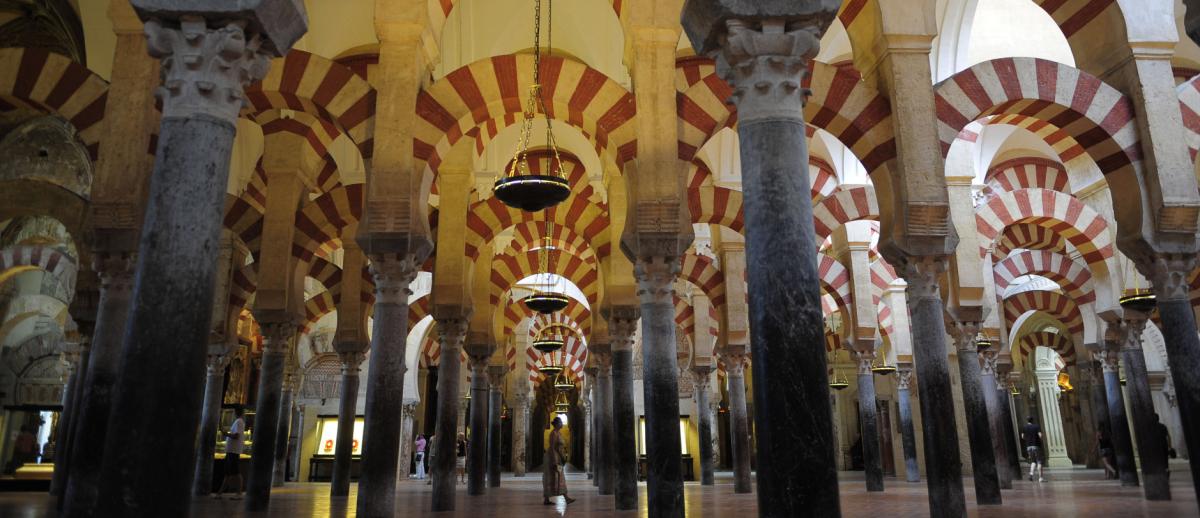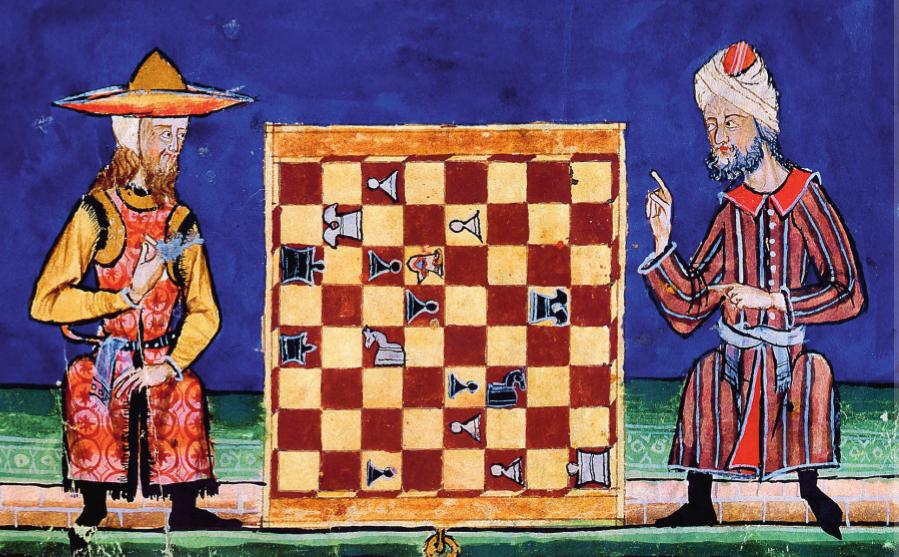Tolerant Islam: The Andalusian Legacy
archive


Tolerant Islam: The Andalusian Legacy
When Thomas Carlyle described the Qur’an as a work of “insupportable stupidity,” he was expressing the prejudices of an unenlightened colonialist power. One might have hoped that Western society would have become more open-minded in the intervening century and a half. Since the terrorist attacks of September 11 and, nearly two decades later, the killings of Paris, Brussels, and London, Islam has been branded by many around the world as a religion of violence. In recent years, the word “Islamic” has become one of the adjectives of “terrorism.” Substantially higher numbers of Americans today believe that Islam is more likely than other religions to encourage violence among its followers. According to the PEW Research Center, nearly half of the public in the United States thinks that half or more of Muslims worldwide hold anti-American views. Islam is widely seen as a religion of terror and conquest and many believe that Muslims around the world use the Qu’ran as a justification for endless crimes, wars, and terrorist attacks.
To understand the relationship between Muslims and nonviolence, one needs to go beyond the conventional discourses on “Islam and Violence” that dominate the media and recent works of some specialists of the Middle East. One should not limit the discussion to questions of shallow theology that serve journalistic purposes. But one needs also not to be a pure apologist of Islam and repeat the oft-quoted phrase that “Islam is a religion of peace,” as if it excuses Muslims from committing acts of violence against other faiths and communities. More precisely, we need to admit that religious violence has been very common throughout human history and that Christians, Jews, Hindus, and others have engaged in different acts of violence. In the long run, there is no such thing as “good” or “bad” religions. There are only “hard readings” and “soft readings” of religious texts. Hard readings of religious texts end up with a hard doctrine of international politics. We can find in all religions a group of hardliners who believe that hard religion is the only possible point of view to face the tough realities of our world. Actually, the ideologization of religion binds it to a single interpretation and generates a class of “hard” interpreters who turn their readings of the religious texts into instruments of fanaticism and hatred. Having knowledge of this, one can say that Islamic fundamentalists are not members of a new race of Muslims, but adherents to a coherent militant ideology with a complete system of belief about the organization of the state and the world.
However, Islam—so often seen as the West’s “other” and depicted as a monocultural and intolerant religion—itself has centuries of experience of hosting and regulating a diverse cultural mosaic. The first example could be taken from the time of the Ottoman Empire, where religious minority groups were given considerable freedom in administrating their communal affairs. Each community had its own spiritual/political leaders who mediated between the community and the state. In addition to their communal loyalties, all members of society, regardless of their religion, owed allegiance to two Ottoman officials: the head of their profession and the head of their residential quarter. So religion was only one factor among others in multi-cultural Ottoman society. Interestingly, numerous Jewish and Christian physicians were so respected that some served in the Ottoman sultan’s court. One was Hekim Yakub, who gained such a reputation that a district of Istanbul was named after him. Another important Jewish figure was Yakub Mahallesi, who eventually became vizir (prime minister). The Ottoman dignitaries from religious minorities includes Rabbi Moses Capsali, the spiritual and political head of the Jewish community of Istanbul; Rabbi Salto, a Sephardic Jewish fiscal administrator; Don Joseph Nasi (banker, advisor, and ‘tax farmer’ eventually bestowed the title of Duke of Naxos by the sultan) and his equally famous wife, Dona Reyna. These were mostly Sephardic Jews who were expelled from Europe by the Catholic Kings of Spain after 1492. Thus, Islam managed to be accommodating within the multicultural framework of the Ottoman Empire.
...the ideologization of religion binds it to a single interpretation and generates a class of “hard” interpreters who turn their readings of the religious texts into instruments of fanaticism and hatred.
An earlier and perhaps more significant example from Islamic history would be the Andalusian experience. This history, which we might more precisely call the “Cordoba paradigm,” cannot be divorced from—and indeed, is one zenith of—Islamic civilization. It is worth benchmarking, inasmuch as here many of the principles of inter-faith and inter-cultural dialogue could be fully realized, beginning especially with the transmission of knowledge mainly from Greek sources into Arabic before they were translated into other languages. Andalusia was a unique experience in terms of its tangible accomplishments in all spheres of life. Learning was emphasized, marked by a fascination with science, Arabic literature, and the philosophical discourse on reason and faith. But most important was the experience of diversity and dialogue. Cultural coexistence took many forms, weaving a pattern of contact and tradition, creation and rediscovery.

Christian and Muslim playing lutes. Miniature from Catinas de Santa Maria of Alfonso X.
One might try to find the philosophical core of Islamic nonviolence in the civilizational dynamism of the Andalusian experience. We must emphasize that Andalusia established a connection between the Orient and the Occident and between Antiquity and the Renaissance. Al-Andalus in particular, but also Islamic civilization in general, served as both the repository of ancient Greek knowledge and science, and a crucial transmission point in its journey to the Christian-dominated West. The cultural legacy of Cordoba is impressive in its scale and splendor, encompassing on the one hand the Arab-Islamic tradition of Ibn Tufayl and Averroes (Ibn Rushd), and on the other hand the Judaeo-Arab heritage of Ibn Gabirol and Maimonides (Ibn Maymun), thinkers who used Arabic as their medium of expression.
Comparisons have often been drawn between the Summa Contra Gentiles of St. Thomas Aquinas, Maimonides’ Guide of the Perplexed, and Averroes’s The Incoherence of the Incoherence. Cultural coexistence of this kind was made possible by religious and legal principles that were far-reaching in their implications. This is why the Andalusian experience is an exceptional moment in history, probably unique in its own time and rarely matched in any other.
In today’s globalized world we are faced with the same issue of peaceful coexistence. Yet our world, which prides itself on the liberalism and universality of its ideas, offers few examples to match the Andalusian experience. Unfortunately, the theory of the clash of civilizations has distorted our historical view. Dominant historiographical trends in Islamic studies focus their analyses either on the distant past of early Islam or on contemporary Islam, and forget the Andalusian legacy by perceiving it as something exclusively Spanish and thus isolated from the rest of the Muslim world. Despite this historical forgetfulness, the Andalusian experience nevertheless still serves as a dialogical legacy and a philosophical attitude that has brought the Western and the Muslim worlds closer to each other. As a civilizational potential, Islamic societies cannot deny this legacy of dialogue and empathy which has existed among Muslims. It is time to revitalize this potential in the Islamic public arena against the closed views of Islamic fundamentalism.
One might try to find the philosophical core of Islamic nonviolence in the civilizational dynamism of the Andalusian experience.
Truly, if Islam has a cultural future, it is through reliance on its tradition of dialogue and exchange with other cultures and religions. But one needs to remember that the “Cordoba paradigm” is also a legacy for Europeans to cherish and remember, without which their view of their own multiculturalism would be distorted. Actually, one can say that the glory of Islamic civilization emerged as a consequence of the enormous confluence of divergent ideas leading to the rise of several streams of discourse on fiqh (Islamic legal thought), Falsafa (philosophy), adab (moral science), tasawwuf (spirituality), and Kalam (metaphysics). These streams of contingent ideas continue to flow and enrich not only the Islamic world, but all of human civilization.

A Jew and a Muslim playing chess in 13th century al-Andalus. Wikipedia.
The “Cordoba paradigm” could be justly celebrated in our times for the extent to which religious pluralism and cultural tolerance were hallmarks of the era. The realization of the ideals of toleration is a perennial struggle for Islamic communities around the world. As such, the only way for Muslims to understand and appreciate the real significance of the tradition of toleration in Islam is to have a “civilizational” viewpoint of this religion beyond any ideological interpretations of its spiritual content.
Abu-Nimer, Mohammed. Nonviolence and Peace Building in Islam: Theory and
An-Na’im, Abdullahi Admed. Pennsylvania Studies in Human Rights: Muslims
Nasr, Seyyed Hossein & Jahanbegloo., Ramin. In Search of the Sacred. (Praeger,
Shalaby, Ibrahim M. “Islam and Peace.” The Journal of Religious



